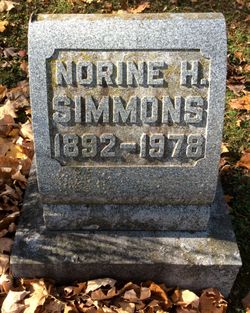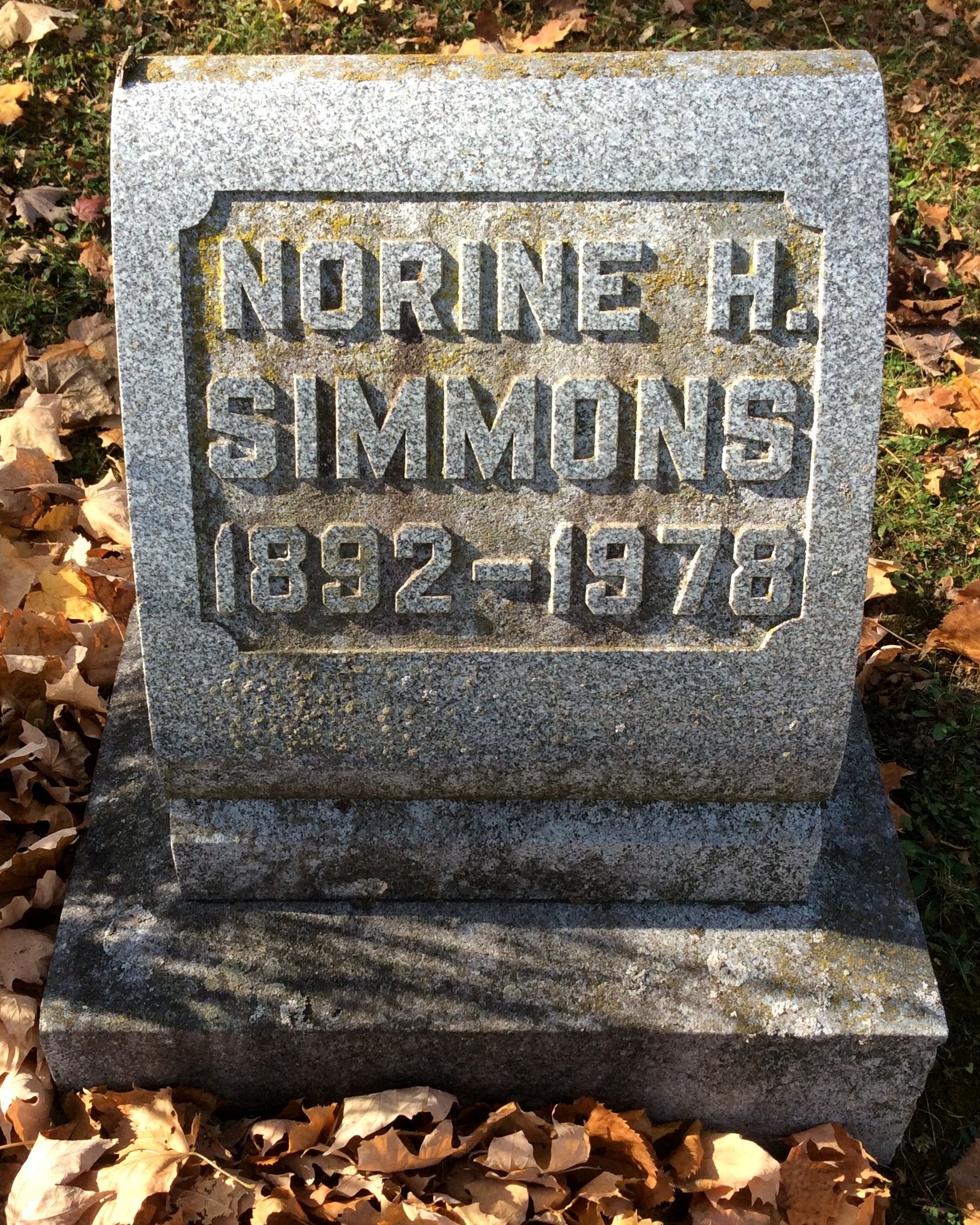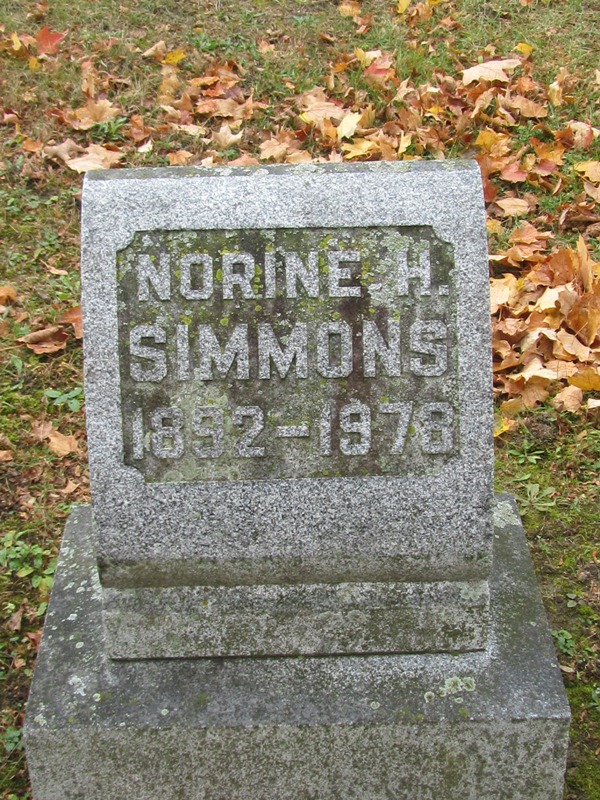She wore shoes that came up over her ankles and buttoned (instead of tied). For this purpose, they had button hooks which you put through the hole (or loop), put the hook around the button and pulled it through. She told me that when she would outgrow her shoes, her father would draw around her foot on a piece of cardboard, cut it out, and take it to buy her new shoes. Her mother made all of her clothes.
She had long hair and as soon as it got long enough it was wound around in what they called a bun on the back of her head. She wore it like that until after she was married.
There were no cars in those days so they used a buggy pulled by a horse to go any place. She and her brother, Carl, had a horse and buggy to drive to school. The horse they had used to be used on a rural mail route and they never could break it of stopping at every mailbox. It was very cold in the winter, so they had a lap robe (blanket) which they put over their lap and legs. They would take turns driving the horse so the person who was riding could sit on their hands to keep them warm. If the driver had a runny nose, the rider would wipe it for them!
She went to a country school where they taught all grades (1-6) in one room. She later taught in one of these schools. All you had to do in those days was to pass a test to be a teacher.
She played the piano by ear from the time she was a very young girl. Sometimes she would get up in the middle of the night if a tune she had heard was going through her head and go downstairs and play it so she wouldn't forget it. She didn't learn to read music until she was an adult and took lessons at the conservatory in Detroit.
When she was a young girl she had scarlet fever which was very serious in those days since they didn't have modern medicines. Her room was quarantined, which meant that no one could go in but her mother, and everything that left her room (as well as her mother) had to be thoroughly washed and disinfected. It was summer time so her window was open and her brother used to sit outside her window and read to her. Scarlet fever left her slightly deaf--an impairment she had for the rest of her life.
One time she decided she wanted a lamb for a pet. After considerable begging, her father finally bought her one. I don't know how long she had it, but one night a dog got to it and killed it. It still made her sad just to tell about it in later years.
They did have street cars (called interurbans) in those days. There was a track that ran from Detroit through Farmington (where she lived) and on to Northville. That was a distance of about 25 miles. Occasionally she would go into Detroit on that when she got a little older and when she went to high school she rode the street car into Northville.
In those days houses were heated by stoves or fireplaces in the main room or rooms. They burned either wood or coal in them. Usually bedrooms weren't heated and when she was a little girl they would undress by the stove and leave their clothes on a chair by the stove so they would be warm to put on in the morning, and then run up to bed.
They didn't have inside plumbing for a bathroom but used an outhouse for a toilet. Every Sat. night they would heat water (on the kitchen stove) to put in a wash tub and take their bath there in the kitchen where it was warm.
Because of the lack of good transportation, they didn't go far for vacations. Her family used to camp out at a lake about 20 miles from where they lived for a week or two every summer. Later they bought a cottage on a lake nearby where they would spend the summers.
At school, Norine sat behind a boy named George Simmons. They sat in the old-fashioned type of desks, and his chair was attached to her desk. Every once in awhile George would wiggle around in his chair so that Norine's books would fall on the floor. Norine really thought that George was a big pest. She must have changed her mind, however, because several years later she became Mrs. George Simmons!
She wore shoes that came up over her ankles and buttoned (instead of tied). For this purpose, they had button hooks which you put through the hole (or loop), put the hook around the button and pulled it through. She told me that when she would outgrow her shoes, her father would draw around her foot on a piece of cardboard, cut it out, and take it to buy her new shoes. Her mother made all of her clothes.
She had long hair and as soon as it got long enough it was wound around in what they called a bun on the back of her head. She wore it like that until after she was married.
There were no cars in those days so they used a buggy pulled by a horse to go any place. She and her brother, Carl, had a horse and buggy to drive to school. The horse they had used to be used on a rural mail route and they never could break it of stopping at every mailbox. It was very cold in the winter, so they had a lap robe (blanket) which they put over their lap and legs. They would take turns driving the horse so the person who was riding could sit on their hands to keep them warm. If the driver had a runny nose, the rider would wipe it for them!
She went to a country school where they taught all grades (1-6) in one room. She later taught in one of these schools. All you had to do in those days was to pass a test to be a teacher.
She played the piano by ear from the time she was a very young girl. Sometimes she would get up in the middle of the night if a tune she had heard was going through her head and go downstairs and play it so she wouldn't forget it. She didn't learn to read music until she was an adult and took lessons at the conservatory in Detroit.
When she was a young girl she had scarlet fever which was very serious in those days since they didn't have modern medicines. Her room was quarantined, which meant that no one could go in but her mother, and everything that left her room (as well as her mother) had to be thoroughly washed and disinfected. It was summer time so her window was open and her brother used to sit outside her window and read to her. Scarlet fever left her slightly deaf--an impairment she had for the rest of her life.
One time she decided she wanted a lamb for a pet. After considerable begging, her father finally bought her one. I don't know how long she had it, but one night a dog got to it and killed it. It still made her sad just to tell about it in later years.
They did have street cars (called interurbans) in those days. There was a track that ran from Detroit through Farmington (where she lived) and on to Northville. That was a distance of about 25 miles. Occasionally she would go into Detroit on that when she got a little older and when she went to high school she rode the street car into Northville.
In those days houses were heated by stoves or fireplaces in the main room or rooms. They burned either wood or coal in them. Usually bedrooms weren't heated and when she was a little girl they would undress by the stove and leave their clothes on a chair by the stove so they would be warm to put on in the morning, and then run up to bed.
They didn't have inside plumbing for a bathroom but used an outhouse for a toilet. Every Sat. night they would heat water (on the kitchen stove) to put in a wash tub and take their bath there in the kitchen where it was warm.
Because of the lack of good transportation, they didn't go far for vacations. Her family used to camp out at a lake about 20 miles from where they lived for a week or two every summer. Later they bought a cottage on a lake nearby where they would spend the summers.
At school, Norine sat behind a boy named George Simmons. They sat in the old-fashioned type of desks, and his chair was attached to her desk. Every once in awhile George would wiggle around in his chair so that Norine's books would fall on the floor. Norine really thought that George was a big pest. She must have changed her mind, however, because several years later she became Mrs. George Simmons!
Family Members
Sponsored by Ancestry
Advertisement
Explore more
Sponsored by Ancestry
Advertisement









